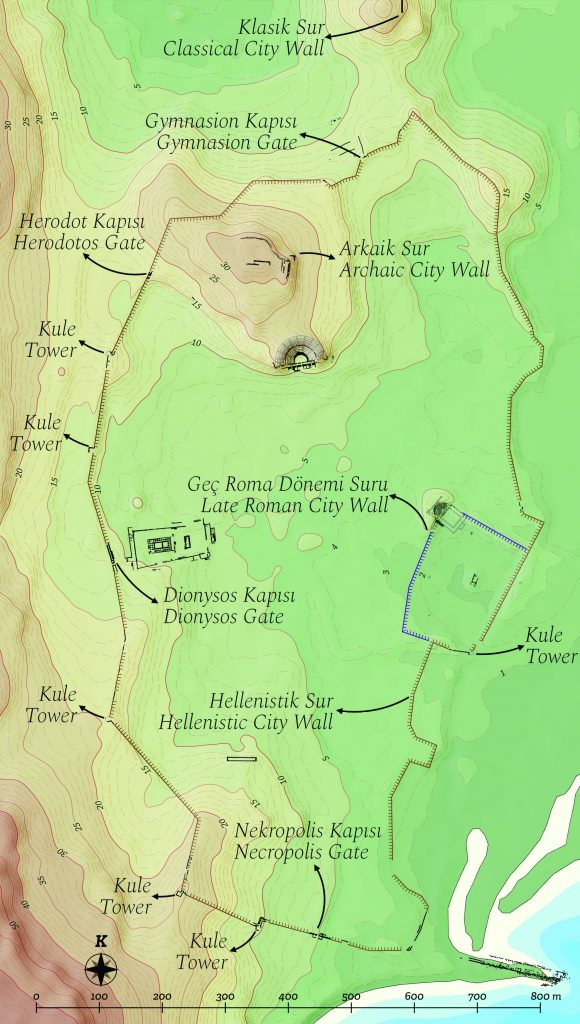It is learned from both ancient sources and archaeological remains unearthed in the city that many defensive walls were built in the ancient city of Teos, where the first traces of settlement were detected as of the 10th century BC, during a period of approximately 1000 years from the 6th century BC to the 3rd century AD. In contrast to the Archaic fortification (6th century BC), which probably only surrounded the Acropolis, in the Classical Period (4th century BC), a defensive wall line was built on Külahlıkır Hill in the northeast of the city to protect the city against enemies coming from the sea, i.e. from the northern Harbour (Gerrhaiidai) and from land, and then a magnificent fortification system surrounding an area of 65 hectares was built in the Hellenistic Period when the city-state prospered again. Original rectangular cut limestone blocks were used in all three fortifications. After a period of prosperity of approximately 550 years following the Hellenistic fortification, which reached a total length of 3.8 km, a fourth defence wall was built in the Late Roman Period, as if forming an inner fortress, surrounding an area of 3 hectares covered only by the city’s council house (bouleuterion) and the agora, by reclaiming architectural blocks from disused buildings.

